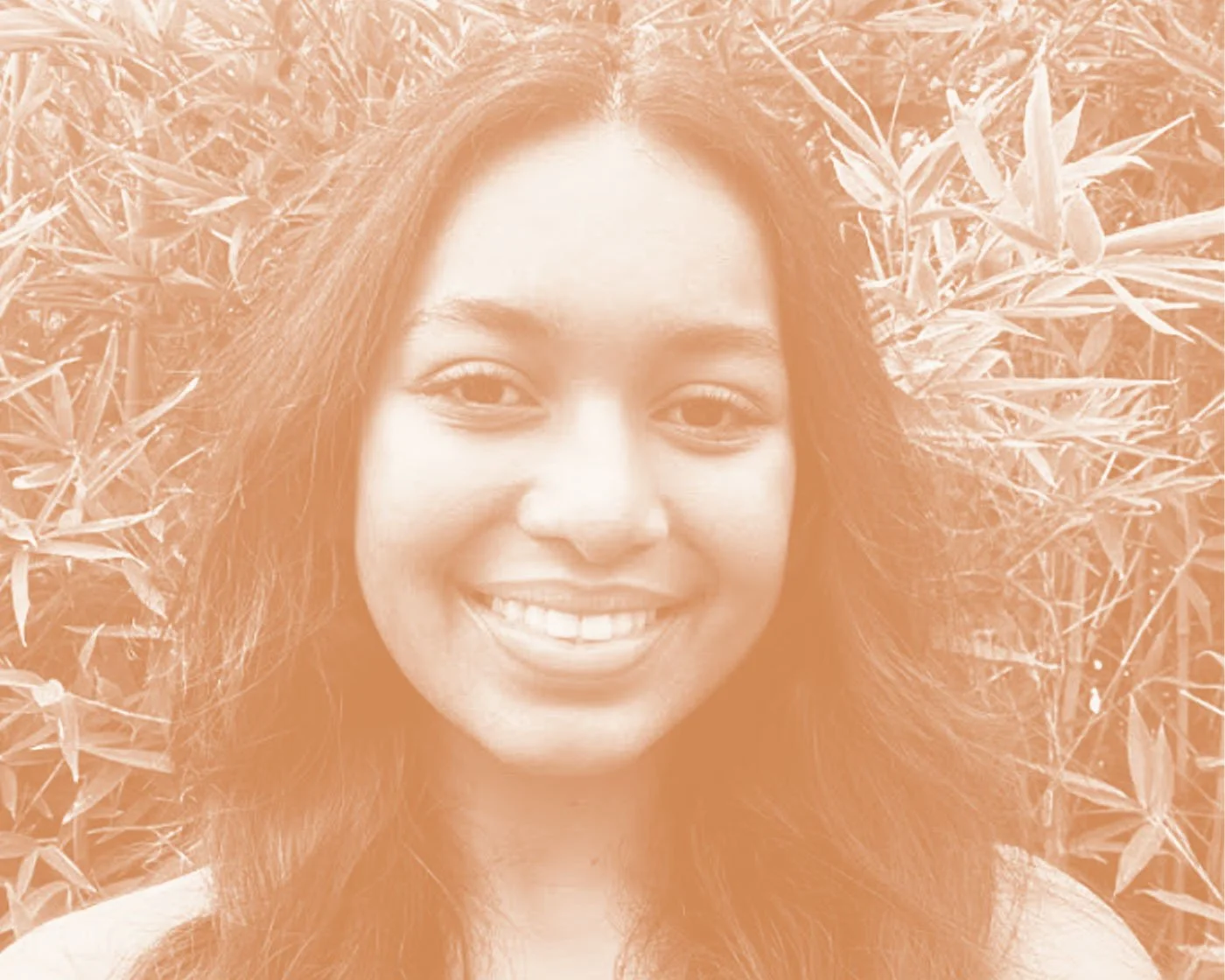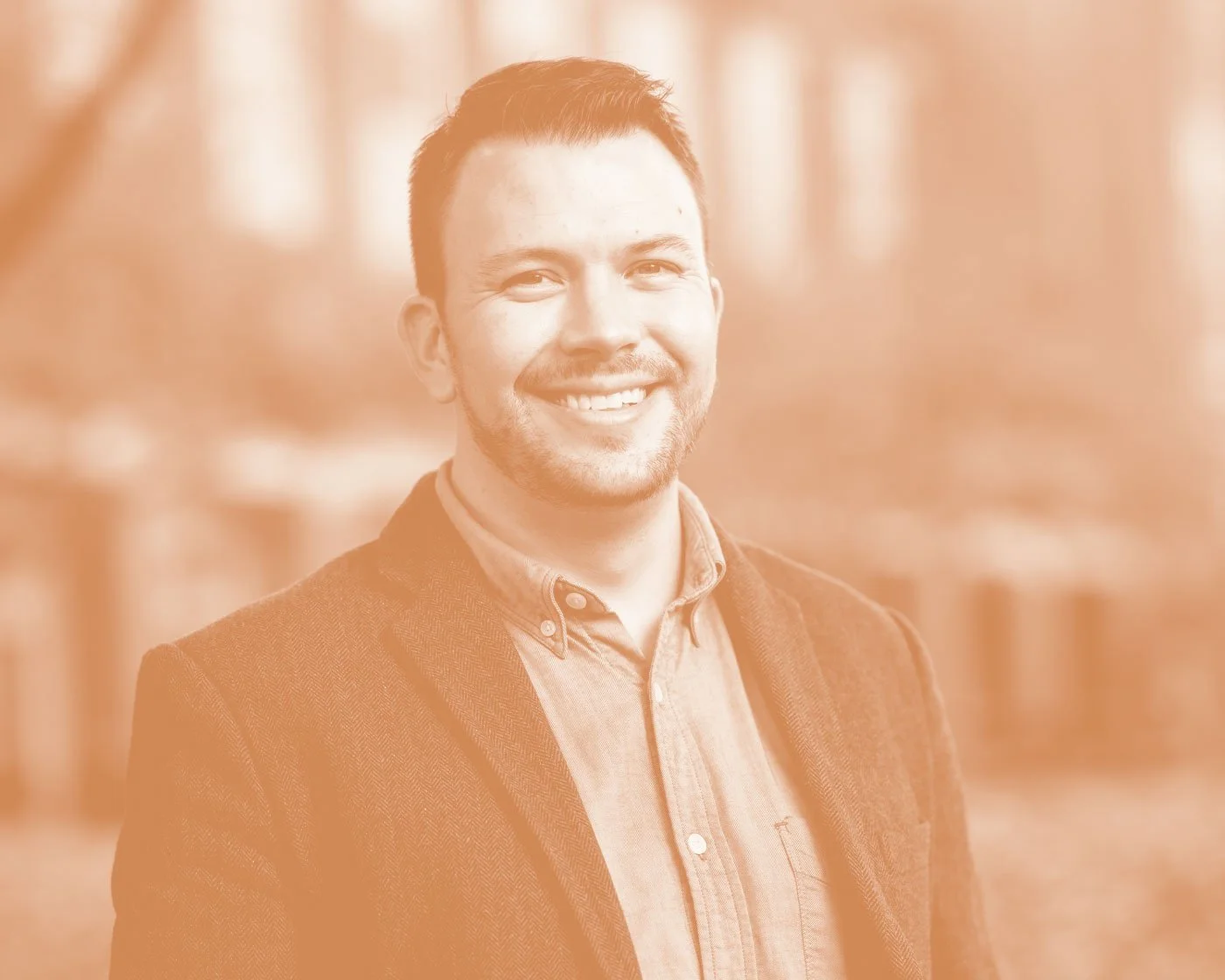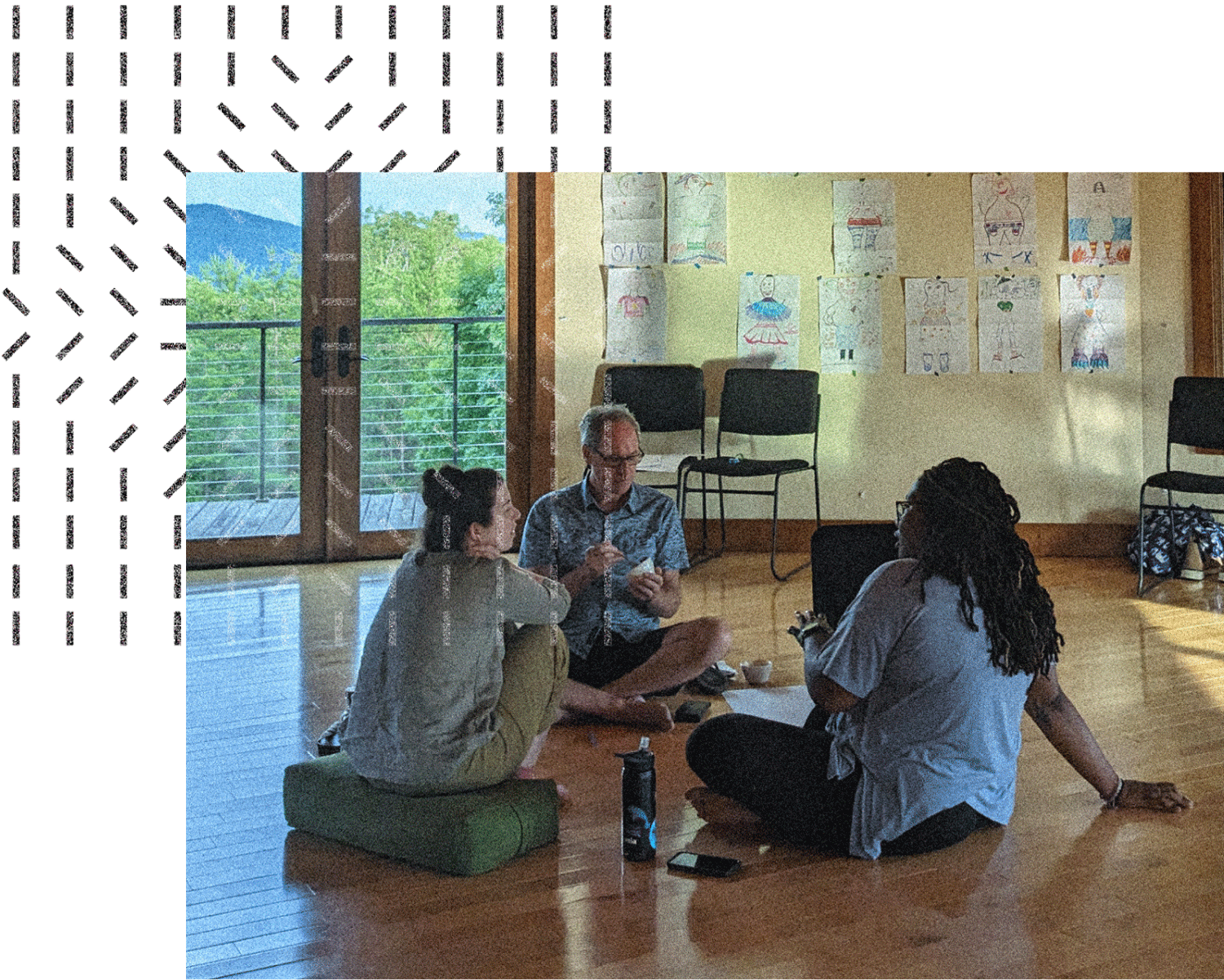Participant & Facilitator Stories
People often come to Climate Wayfinding because they find themselves at a crossroads of some kind — a moment of seeking clarity or new approaches, community or renewal of purpose. Here, Climate Wayfinding participants and facilitators reflect on their own climate crossroads, their experiences in the program, and its continued reverberations through their lives and work. These are stories of how we find our way.

Heidi Campbell, Laura England, and Carla Ramsdell
she/her • various faculty and staff roles, Appalachian State University • 2024 Climate Wayfinding facilitators • Boone, NC
“We couldn’t have picked a better facilitator trio as far as leaning into each other’s strengths. It was magical the way it worked out.”

Meghan Chapple
she/her • VP of sustainability, Georgetown University • 2023 Climate Wayfinding @ Omega alum • Silver Spring, MD
“I think so many of us — even when we aren’t talking about it — have this anxious part inside saying, ‘Get to net-zero by 2030. Fight all the wildfires. Do everything good for the climate, alone, right now… go!’ And we don’t know how to admit this to each other, much less how to unpack it so that it doesn’t freeze us in fear, in inaction, in isolation. We miss the ‘nourishment’ piece — making connections, playing to your strengths, and feeling the joy that comes from that. Climate Wayfinding gave me that nourishment and the skills to bring it into my own work.”

Nicole “Niki” Ciulla
she/her • assistant professor of English, Winona State University • 2024 Climate Wayfinding facilitator • Winona, MN
“[Faciliating Climate Wayfinding] was serious fun. The program added both inspiration and excitement to my fall semester.”

Anya Gandavadi
she/her • undergrad studying environmental science, The University of Texas at Austin • 2023 Climate Wayfinding online alum • Austin, TX
“Even though I had the climate knowledge and the passion, I realized something was still holding me back from taking the climate action I wanted to take: fear, and the inner work I needed to do to actually sit with that fear and understand it. Climate Wayfinding gave me the space, tools, and supportive community to do this work. I feel a new steadiness. Steady in myself and in how I can best be of use in the climate movement.”

Francisco Gallegos
he/him • assistant professor of philosophy, Wake Forest University • 2022 Climate Wayfinding @ Omega alum • Winston-Salem, NC
“When I found Climate Wayfinding, I was really struggling with the disconnect between the urgency of the climate emergency we are in and my inability to talk about it in social spaces without being labeled ‘a really big bummer.’ I needed help learning how to talk about these emotions in productive and nourishing ways, without being naive or dismissive. Otherwise, I feared that every conversation would keep ending with, ‘We are all doomed,’ which is actually not what the science says. The solutions are out there. That’s the good news. But people need the emotional tools to even have the energy and clarity to act on them.”

Grey Kenna
she/her • master’s candidate in community development & action, Vanderbilt University • 2022 Climate Wayfinding online alum • Nashville, TN
“Climate Wayfinding taught me how to go where the energy is — to be honest with myself about what I actually enjoy and find energizing. And then to go and do that in service of the planet. I am an artist and a photographer. I no longer see that as separate from ‘more serious’ climate work. My contributions matter. It all matters.”

Julia Kim-Cohen
she/they • senior lecturer, University of Illinois Chicago • 2024 Climate Wayfinding facilitator • Chicago, IL
“It’s no exaggeration to say that Climate Wayfinding was life-changing for me. Approaching climate engagement from the position of power and joy is an immensely more productive approach than the anxiety, grief, and anger I felt before.”

Belinda Ramírez
they/them • Assistant Professor of Sociology and Global Public Health at Binghamton University • 2023 Climate Wayfinding @ Omega alum • Binghamton, NY
“Educators like me need the tools of Climate Wayfinding to navigate the feelings side of climate work, for ourselves and for our students. So many students are flailing in the midst of the knowledge that we are in a climate emergency and yet many in power are not doing anything about it. How can we feel our way through those feelings together and keep going? Because the world needs us.”

